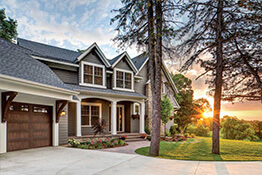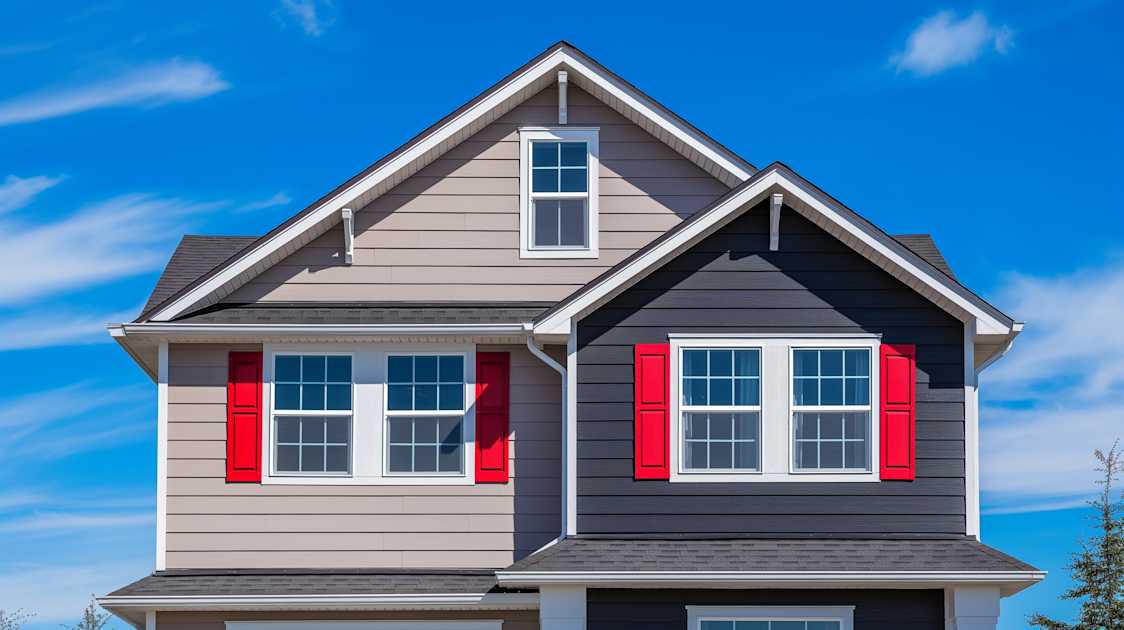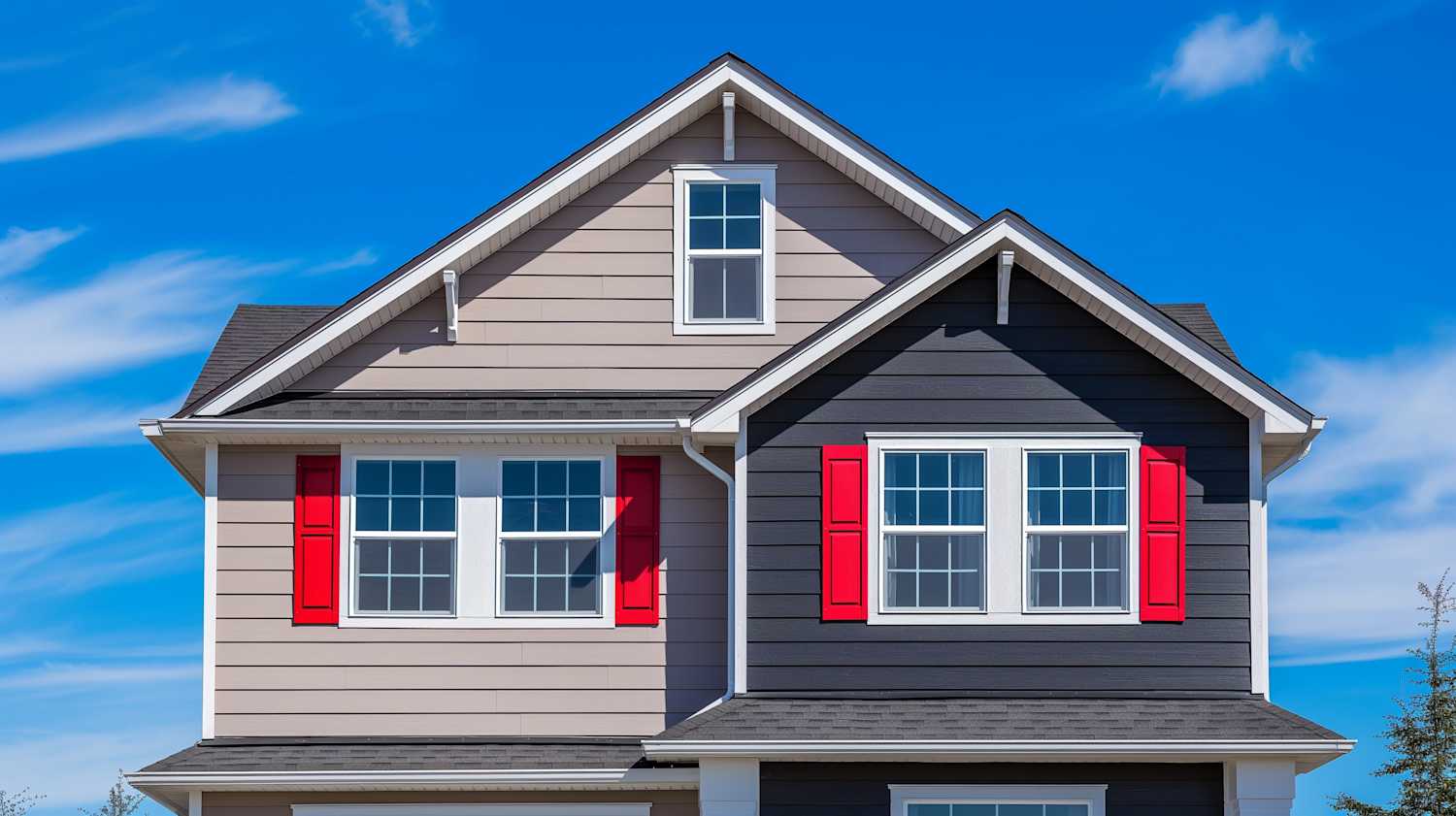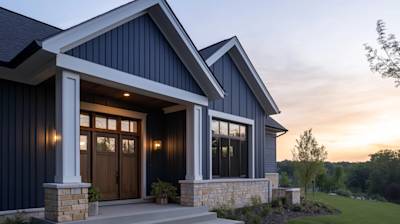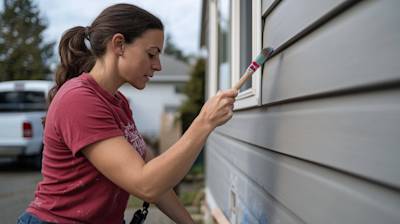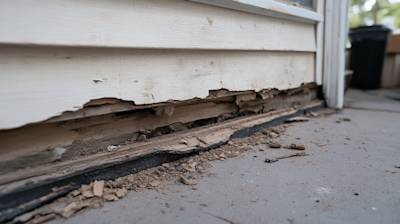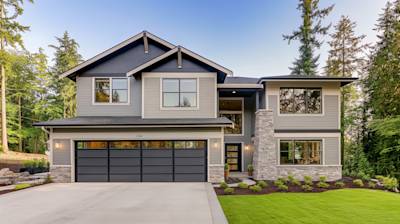When it comes to home exteriors, the right siding can dramatically enhance your property's curb appeal, while also safeguarding your home from the elements. Not only that, but the right siding can potentially save you money on energy costs, depending on the material. So, what are the different types of siding available in today's market, and what should you consider when choosing the right one for your home? This blog post will give a comprehensive overview of various types of siding, their characteristics, and methods of maintenance.
A Closer Look at the Different Types of Siding
Siding is available in a variety of materials, colors, and textures, each with its unique benefits. Below we will delve into the different types of siding to help you find the best solution for your home.
Vinyl Siding
Vinyl siding, made from PVC (polyvinyl chloride), is an immensely popular choice among homeowners due to its durability, low maintenance, and affordability. Available in numerous color options, vinyl siding does not require painting. Additionally, today's vinyl products are crafted to mimic the natural look of wood grains and other siding materials.
Wood Siding
Wood siding offers a timeless and rustic charm to any home and is often used for cottages, bungalows, and other designs that require a traditional or natural look. Common types of wood used for siding include pine, cedar, and redwood. Wood siding, while beautiful, requires regular maintenance to prevent damage from insects or rot.
Brick Siding
As one of the most traditional types of siding, brick offers an enduring presence and a classic aesthetic. Brick siding, installed as an exterior covering over wood frame or brick, gives homes a solid and timeless appearance. While brick siding's initial cost might be higher than other options, its durability and low maintenance can make it an attractive investment in the long run.
Fiber Cement Siding
Fiber cement siding is formed by a mixture of wood pulp and Portland cement, creating a material that looks remarkably like wood but requires less maintenance. Aside from its aesthetic appeal, fiber cement siding is known for being rot and fire resistant, low maintenance, and available in a variety of styles, including both horizontal panels and shingles.
Key Factors to Consider when Choosing a Siding
Now that you're acquainted with the different types of siding available, it's vital to consider some factors when making a choice for your home.
-
Durability: How well does the siding withstand different weather conditions like rain, snow, and intense heat? Will it resist wear and tear over time?
-
Maintenance: What will it take to keep your siding looking its best? Does it require repainting, and how often? Will it need to be replaced over time?
-
Cost: How does the siding material fit into your budget not only at an initial cost but also in terms of potential maintenance costs or savings?
-
Energy Efficiency: Better insulated siding can help lower your energy costs by reducing the amount of heat your home gains in the summer and loses in the winter.
-
Style: Your siding can drastically affect the overall look of your home. Ensure your choice complements the rest of your home's exterior and reflects your personal taste.
Clearly, your choice of siding can significantly influence your home's exterior aesthetics while providing important protection from the elements. Whether you prioritize style, durability, maintenance, or cost, there's a type of siding to suit your home and your unique preference. Hopefully, the information provided here about the types of siding available today will ensure you make an informed decision that enhances your home's beauty while providing a robust barrier against Mother Nature.
Frequently Asked Questions about Types of Siding
What are the different types of siding materials?
When thinking about the types of siding materials, there are plenty to choose from. Some common types include vinyl siding, wood siding, stone veneer siding, metal siding, fiber cement siding, stucco siding, and brick or brick veneer siding.
What are the characteristics of vinyl siding?
Vinyl siding is one of the most popular types of siding materials. Known for its durability and low maintenance, vinyl doesn't need to be painted and can resist pests, moisture, and extreme weather conditions. It's available in a wide array of colors and styles to complement any home design.
Does wood siding require maintenance?
Yes, wood siding requires more maintenance compared to other types of siding. The wood needs to be treated and painted regularly to prevent rot and insect damage. However, its natural aesthetic appeal and charm often make it worth the effort for many homeowners.
Can you tell me more about stone veneer siding?
Stone veneer siding adds a touch of elegance and sophistication to any home. This type of siding mimics the look of natural stone, but at a fraction of the cost. However, it’s crucial to install it properly to prevent moisture from seeping behind the veneer.
What are the benefits of metal siding?
Metal siding, including materials like aluminum and steel, is often chosen for its durability and resistance to elements like wind, rain, and fire. Metal siding requires very little maintenance, lasts a long time, and can be recycled, making it an eco-friendly option.
How does fiber cement compare to other types of siding?
Fiber cement siding strikes a balance between performance and aesthetic appeal. It imitates the look of natural wood, but it's more durable, fire-resistant, and not prone to pests. The material does require some maintenance, though, like repainting every 15 to 20 years.
Why might homeowners choose stucco siding?
Stucco siding has a distinctive look that many homeowners love. It's a durable type of siding made of cement, sand, and lime, which can last for many decades if properly maintained. Stucco's ability to withstand heat makes it an excellent choice for homes in warmer climates.
What are the features of brick veneer siding?
With brick veneer siding, you can achieve the look and feel of traditional brick, but at a fraction of the cost. This type of siding is lightweight and less expensive than solid brick, though it still offers excellent insulation and durability.
How long can each type of siding last?
The longevity of the siding can vary greatly. Vinyl siding can last about 20-40 years, while fiber cement siding usually lasts about 30-50 years. Wood siding can last upwards of 100 years with proper maintenance. Brick and stone veneer siding, as well as metal siding, are known for their longevity, often lasting the lifetime of the home.
What impacts the cost of different types of siding?
Several factors can impact the cost of siding, including the type of material, the size of your home, labor costs in your area, and any additional features or finishes. Hence, it's essential to consult with a professional before making a choice.
Pros and Cons of Different Types of Siding
Vinyl Siding
Pros of Vinyl Siding
- Durability: Vinyl siding is known for its durability and longevity. It is resistant to common issues like rot, termites, and rust.
- Maintenance: Vinyl siding requires minimal maintenance and only needs to be cleaned occasionally to keep its appearance.
- Cost: Vinyl siding is relatively affordable, making it a popular choice for many homeowners.
- Variety: Available in a vast array of colors and styles, vinyl siding can mimic the look of more expensive materials.
Cons of Vinyl Siding
- Denting: Although durable, vinyl can dent relatively easily and these dents are usually permanent.
- Fading: Over time, exposure to sunlight can cause the color of vinyl siding to fade.
- Environmental Impact: Vinyl siding is made from PVC, a non-biodegradable material that can linger in the environment long after its usefulness.
Wood Siding
Pros of Wood Siding
- Aesthetic Appeal: Wood siding offers a timeless, natural, and versatile look.
- Insulator: Wood is a natural insulator, helping to maintain indoor temperatures and lower energy bills.
- Customizable: Wood siding can be painted or stained in any color, allowing homeowners to personalize their exterior.
Cons of Wood Siding
- Maintenance: Wood siding requires regular maintenance including staining or painting to prevent weather damage and rot.
- Cost: Depending on the type of wood, this type of siding can be quite expensive.
- Pests: Wood siding can be vulnerable to termites and other wood-boring pests.
Brick Siding
Pros of Brick Siding
- Durability: Brick siding is extremely resilient, can withstand harsh weather, and has a lifespan of up to 100 years if properly maintained.
- Maintenance: Brick requires little maintenance and does not need to be painted or stained.
- Fire Resistance: Brick is a fire-resistant material, providing additional safety for your home.
Cons of Brick Siding
- Cost: Brick siding is one of the more costly siding options both in terms of materials and installation.
- Masonry Skills: Installing brick siding requires professional masonry skills, contributing to the high installation cost.
- Moisture Problems: If not installed properly, brick siding can allow moisture to seep into the home, which can cause significant problems.
Metal Siding
Pros of Metal Siding
- Longevity and Durability: Metal siding is resistant to rust, fire, termites, and rot, and can last for several decades.
- Low Maintenance: Metal does not require regular painting or staining and is easily cleaned.
- Energy Efficiency: Metal siding reflects heat, which can help to lower cooling costs in the summer.
Cons of Metal Siding
- Cost: Metal siding, especially steel and copper, can be quite expensive.
- Noise: Metal can be noisier than other materials, especially during rain or hail storms.
- Denting: Despite being durable, metal, especially aluminum, can be susceptible to dents and damage from impact.
Stone and Stone Veneer Siding
Pros of Stone and Stone Veneer Siding
- Lifespan: Like brick, stone and stone veneer siding can last for more than a century with proper maintenance.
- Aesthetic Appeal: Stone siding is highly coveted for its aesthetic appeal and luxurious look.
- Fire Resistance: Stone is non-combustible, adding an extra layer of protection to your home.
Cons of Stone and Stone Veneer Siding
- Cost: Stone is one of the most expensive types of siding, both in terms of material and installation.
- Installation: Installing stone or stone veneer siding can be laborious and requires highly specialized skills.
- Weight: Stone is heavier than most other siding materials and may require additional structural support.
Summary
When we consider the different types of siding, it's apparent that each material has its pros and cons. From vinyl siding, known for affordability and durability to fiber cement hailed for its elegance and resistance to various elements, all offer unique advantages. What you select should reflect your needs based on the environmental conditions, the level of maintenance you're able to commit to, your budget, and aesthetic preference.
The market is full of various types of siding and each one can transform the appearance of your home. Wood siding, with its natural appeal and customization potential is perfect for a classic look. Metal siding, on the other hand, suits modern homes and stands up pretty well to harsh weather. Then you have stone and stucco siding considered for luxury homes, boasting great longevity and a unique texture to the exterior of your home.
Your overall satisfaction with your chosen type of siding largely depends on proper installation. Regardless of the material you choose, ensure it's installed by a professional. They can advise on the best types of siding for your climate and your home's architectural style. More importantly, they’ll make sure your siding is installed correctly to last for years to come. Remember, the best siding type for you is the one that satisfies your needs and preferences most completely.
About US Quality Construction of Columbus
Welcome to US Quality Construction of Columbus, your trusted and reliable partner for all your construction needs in Columbus, OH. We take pride in our decades of experience, dedicated team of experts, and our unswerving commitment to provide top-notch service in every project we undertake. Never settling for less than the best, we aim to blend exceptional craftsmanship with enduring results in every construction task, big or small. To learn more, feel free to visit our website here. We're excited to turn your construction dreams into reality!
Tags: siding materials, house exterior, home renovation,
